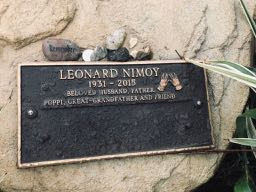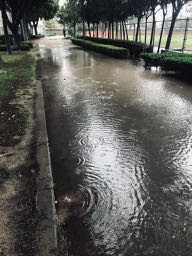The Supreme Court upheld the Superior Court's conclusion that the Board majority had gerrymandered once again and lifted the stay on the order for the Board to adopt Option 2 for the 2022 election. But the Supreme Court did NOT lift the stay on having the Board adopt a permanent map for the rest of the decade.
So, what's happening next? There are two key factors:
- What possible map other than the interim one (Option 2) could the Board come up with that would meet the narrow guidelines of the Superior Court?
- When is the Supreme Court going to weigh in?
First let's look at the possible maps, and then I'll share what I learned from the media liaison at the Supreme Court today.
What possible maps other than option 2 could the Board draw that wouldn't be challenged?
My conclusion here is: There isn't much wiggle room for the Board majority if they get the maps again. First, they were told explicitly that the Senate Seat K (ER and South Muldoon) was intentionally gerrymandered and more vaguely that the two ER districts should be together. They separated Seat K and put South Muldoon with North Muldoon. But instead of pairing the two ER districts together, they left the Chugiak/ER district paired with JBER/Govt Hill and paired the other ER district with South Anchorage.
The second time they were told to use Option 2, which also paired the two Muldoon districts, but paired the ER districts. The Board minority (particularly member Marcum) REALLY wanted to keep Chugiak paired with JBER/Govt Hill. But pairing the ER districts into one senate seat meant JBER got paired with another district in north downtown.
I just don't see many choices for the Board now. One of the instructions was to only make as many changes as necessary to fix the unconstitutional gerrymandering. So there are a couple of Anchorage Bowl districts bordering JBER that could be played with, but I don't see any big payoff for anyone. (I could be missing some incumbent pairing possibly.)
That's a long way of saying the 2022 interim map seems like the only map that makes sense for the rest of the decade. The Board majority could make a couple of Senate pairing changes just to show they won't be stuck with the Court order completely, but it would really be a waste of time and it would mess up incumbents and voters to change their Senate seats just out of spite.
For those who want more detail about the changes, I've prepared the table below and the key parts of the 2021 map and the May 2022 map below.
This really isn't too difficult a problem. But because we've gone through three different maps that caused a number of Anchorage House Districts to change numbers, it's tricky to describe. So, let's look at the changes in the Anchorage House District numbers.
NOTE
|
- Senate districts are made by pairing two House Districts
- No House districts changed boundaries
- Some did change numbers
- Some did change Senate Seat pairing partners
|
I tried to make a chart showing which districts changed numbers, which changed Senate pairings, and which stayed the same. I've used color to illustrate the changes. I suggest you look at the chart, then look below the chart for more explanation of the colors.
[Explanation: Column 1 is the 2021 Proclamation Plan. These are the original house districts and Senate pairings (#s are the House designation, Letters are the Senate pairings). Column one are all aqua.
If nothing ever changes, like HD 11 F, it stays aqua throughout.
If the # changes the top half of the cell goes salmon the first time and lime green the second time. (unless it changes back to the original number, then it goes back to aqua.). HD 9 (South Anchorage) kept the same number in the April map, but got paired with ER the second time. So it stayed aqua on top, but changed to yellow on the bottom. In May it kept its number and got its old Senate partner back, so it goes back to all aqua.
If the Senate pairing changes, the bottom goes yellow the first time and blue the second time (unless it goes back to the original pairing, the it goes back to aqua.)]
Yes, I realize this is way too complicated, and if you find a simpler way to show it, please share it with me. Here's another way to do this: look at the maps. But some districts are too big to fit. I'd note that I'm only looking at the 2021 map and the last map (Option 2, May 2022).
I've drawn boundaries around the Senate pairings. Red is JBER/Chugiak/ER; Black is ER/South Muldoon. Blue is North Muldoon and U-Med. Green is Downton and North Mt. View. That's eight house districts, four Senate seats that are in play.
Below is the May 2022 Option 2 map being used for the 2022 election. The two Eagle River districts are paired (black lines.) JBER/Govt. Hill are together (red). North and South Muldoon are together (blue). Then there are two others paired together (the former pairing of North Muldoon with the former pairing of Downtown (lime green.)
That's pretty much all they can play with. The Eagle River Senate seat is set. The Muldoon Senate seat is set. If you switched JBER/Govt Hill from downtown to North Mountain View, then you'd have to use some other districts.
That leaves us with what is the court going to do next? I emailed the Supreme Court's media liaison, Meredith Montgomery. Below are my questions and her answers.
Q1. When I look at the appellate court Most Requested Cases page (https://appellate-records.courts.alaska.gov/CMSPublic/Search/Media) there are two redistricting cases listed. One says "opinion issued" and the other says "closed." But the Justices said earlier they'd give us a longer document which explained their April decision. Is that still coming? A1. There are two supreme court redistricting cases as you point out. S-18332 is the one where we had the oral argument in March and issued a short order with the "full opinion to follow" language. We don't really have a better status than "opinion issued" to reflect what is happening, but the case is still open and we are waiting for the "full opinion" to be issued. The second case, S-18419 came to us as a petition for review on Judge Matthews's order following remand from our March order, and the supreme court quickly affirmed Judge Matthews ruling on the Board's second map and since we did not retain jurisdiction over that part of the case it is "closed."
Q2. What about a further explanation of their May 24, 2022 Order? Might the two be consolidated?
A2. I have no idea if the "opinion to follow" in S-18332 will discuss anything further in the S-18419 case.
Q3. In the May 24 Order, they left the stay on for Judge Matthews' remand for the Board to work on a new plan for post 2022 elections. Is there another order going to come on that? There isn't much wiggle room for the Board to make changes to the map for 2022. Does leaving the stay imply just leaving the 2022 map as the permanent map? (I know you can't answer that, but just to let you know the sense of my questions now, but some better closure than what we have now is necessary.)
A3. I understand the supreme court May 24 order basically says that the "option 2" map will be used for the 2022 general election, and (this is where we are all guessing) that after the full, explanatory decision is issued in S-18332, the court will lift the stay and allow the Board to get back to work. Of course, depending on what the order says, any need for additional work by the Board could become moot.
Q4. Timing of any further decisions/orders:
A. One natural milestone is today's June 1 deadline for candidates to file.
B. Another possible milestone is after the November 2022 election
C. The urgency of the original decisions isn't as great now, however,
D. It would seem unreasonable to leave the Board and its staff dangling for too long. Staff will look for other jobs and that would cripple the Board moving forward. And Board members potentially could resign rather than leave their lives on hold that long. That would raise issues of who would replace them. The previous legislative appointers and the Supreme Court appointer have all departed those roles. If the governor is not reelected, there would be protests over him appointing any new Board members. This seems like a problem the Court could avoid by deciding sooner than later.
A4. You raise good points about timing, etc. I'm sure the supreme court is aware of them as well.
Conclusion
I like the part where Montgomery writes, "depending on what the order says, any need for additional work by the Board could become moot. "
My look at the district changes and the maps tells me the Board doesn't have many options left and changing the maps yet again only confuses voters and makes candidates' lives more difficult. It makes most sense to go with the 2020 interim map.
I'm guessing the Court is taking advantage of having a little more time to rule. And they also wanted to see how the Board would react. The Board did as ordered. There were a lot of issues raised in the trial and in the second round of challenges. From whether ANCSA lines can be used as "local borders" when drawing district maps to clarifying how to avoid intentional gerrymandering and perhaps modifying the language the Board's attorney relied heavily on, that "everything within a borough or city boundaries is Socio-economically integrated." And I personally would like them to make a distinction between contiguity in rural areas where there aren't roads and contiguity in urban areas where there are lots of roads.
So, trying to craft all that language for future Boards to rely on and getting agreement among the Justices takes time. But the other issues I raised - maintaining Board staff and the potentially nasty problems that could arise if a Board member resigned - also mean that the Court should get a decision out before too long.
The first 'natural' deadline - June 1, 2022, when candidates must file to run for office in 2022 - is no past. (Or will be by the time I get this posted.) I would guess the next word from the Court will either be a decision with directions on what to do next (including possibly leaving 2022 interim plan in place) or a schedule for the Board so they don't hang in limbo too long and can plan their lives.























